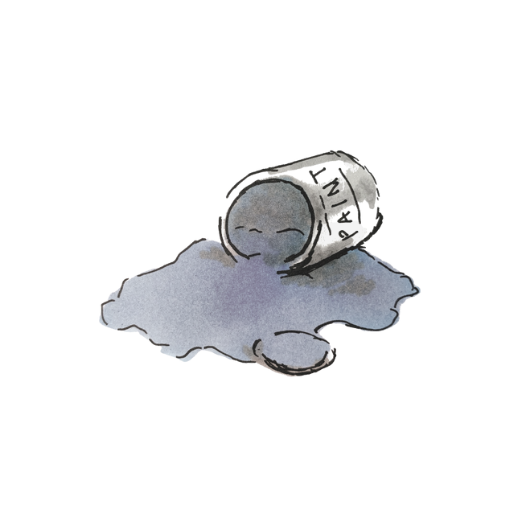
I’ve had a few requests for a blog on how we did our DIY mini pond recently. I must admit, I didn’t take many photos as I did it, but I’ll do my best at giving a guide here.
Keep in mind that I started my DIY mini pond when we still had *shudder* artificial grass, so a lot of the pictures show this. However, the theory is basically the same. Shortly after putting in the pond, we (I) decided to get rid of all the artificial grass, so we basically did the pond in two stages. For the sake of a sensible blog, I’m going to assume you have an ordinary, living lawn, but my pictures show the artificial grass.

What you’ll need:
It’s fairly straightforward, but there are some essentials you’ll need:
- Pond liner – I used this one from B&Q
- Protective layer to use under the liner – this stops and stones etc piercing the liner and causing a leak. As we were in the process of removing our artificial grass, I reused the weed suppressant material for this. Old carpet, underlay or even old clothes/sheets will work.
- Decorative stones – we bought some larger stones from B&Q and reused some pebbles we already had. DIY stores will have a good selection.
- Pond plants (I’ll talk about these later)
- Spade / shovel
- Sharp sand / builders sand
Planning the DIY mini pond
Think about the position of the pond. It’s not recommended to put them under a tree because of leaves falling in, however, that said, mine is under an acer tree. The pond is so small that it’s easy to keep clean and it looks pretty positioned there, so this didn’t bother me.
It’s a good idea to position the pond somewhere where it’ll get the sun, but it’s ok to be in partial shade.

Size wise, our pond is just over a metre in length and about a metre wide. It’s just a mini pond. I want to bring wildlife into the garden and so a source of water really helps; even just a little one like this makes a difference.
You also need a bit of an edge around the pond to hold your liner in place – for one this size a foot or so is enough. I have to admit I didn’t leave quite enough space next to my border edge and as a result it’s been quite difficult to disguise the liner, so plan carefully and make sure you have enough space to place some stones to hide the liner.

With respect to the shape of the pond, I wanted two levels. This helps with pond plants that grow at different depths, looks more natural and also helps wildlife use the pond as they can get in and out. In effect it creates a little beach!
The middle of my pond is 50cm deep and this is just about enough to grow a water lily.
How to make the DIY mini pond
Start digging!

Once you have the deeper bit, you can dig the next level, until you reach the edge. You need to make the pond as level as possible or it’ll be lopsided, though don’t despair as you can rectify these things is it’s not quite right once filled. A spirit level comes in handy to check you’re on course to have a level pond.
These are my two levels:

Once you are happy with the shape, I found it useful to use sand to fill around the edges for a smooth shape. Again, double check you’re level where you want the water to reach.
Next, add the underlay over the sand. You can cut it to shape as needed and position it around the pond. The main thing is to cover the bottom and sides where there will be water.

Now you need to put the pond liner in and this can be tricky. It’s definitely easier with two people. Lay the liner over the whole pond with a good amount of ‘overhang’ like this:

Push the liner into place at the bottom, hold down with something heavy like a brick and the start filling slowly with water. As you fill, the liner will begin to stretch into place and you need to fold the creases out as you go. I had a couple of really big folds but otherwise was able to smooth out most of the creases. You’ll need to spend time getting this right as otherwise the liner will be visible. There’s no real trick to it as such, but our creases were in the corners and the smoothed down as much as possible. You need to keep the liner taught. Pond plants and stones come in handy later on to disguise tricky bits.
Once the pond is full, let it settle overnight and cross fingers for no leaks!
If you are happy the next day that it has stayed at the intended level then you can finish the pond off. We dug a sort of trough about a foot deep and few inches back from the edge of the pond, folded the excess pond liner into this and filled the trough with soil to hold the liner firmly in place.

Now the fun bit! Use decorative stones to disguise as much of the pond liner as possible. Broken terracotta pots are also really handy as the can be positioned over tricky, vertical bits. We used a mix of big and small stones to try to get as natural a look as possible.

Pond plants:
Make sure you plant pond plants at the right depth. For example, lots of water lilies need to be planted quite deeply. I ordered some of my plants from World of Water including water forget-me-nots which have been a lovely addition for some quick cover and colour. You need to keep them cut back or they can take over!
If your pond isn’t too deep, but you want a water lily, then you could try a Pygmy Lily which will do ok in shallow water.
Choose at least one oxygenating plant to help keep a good balance in the pond.
It’s also a good idea to get a few pond snails! They keep the water clean and they don’t eat hostas!



Nice. It will bring you so much joy
Author
We love it – brings the cat hours of entertainment too! X